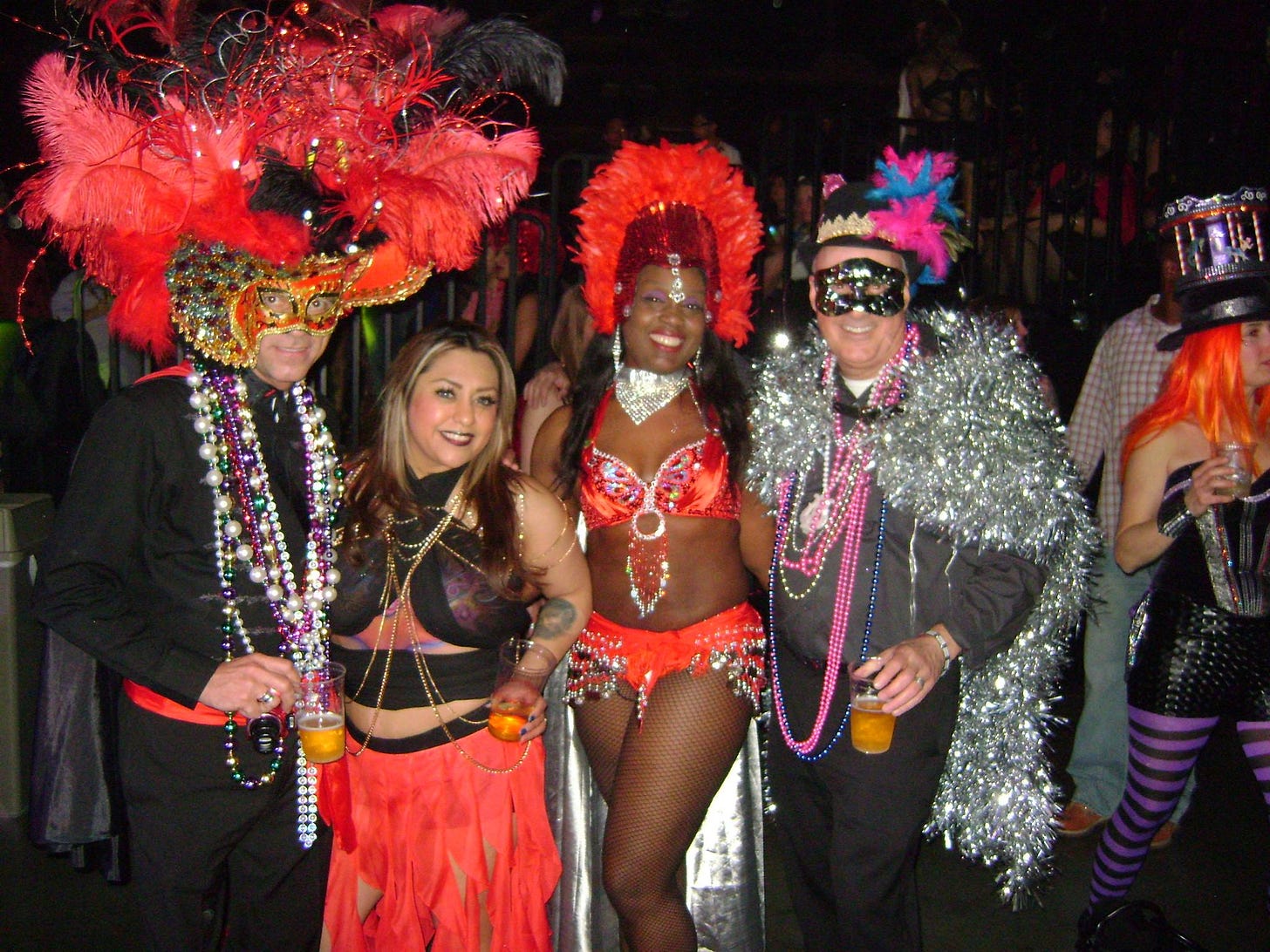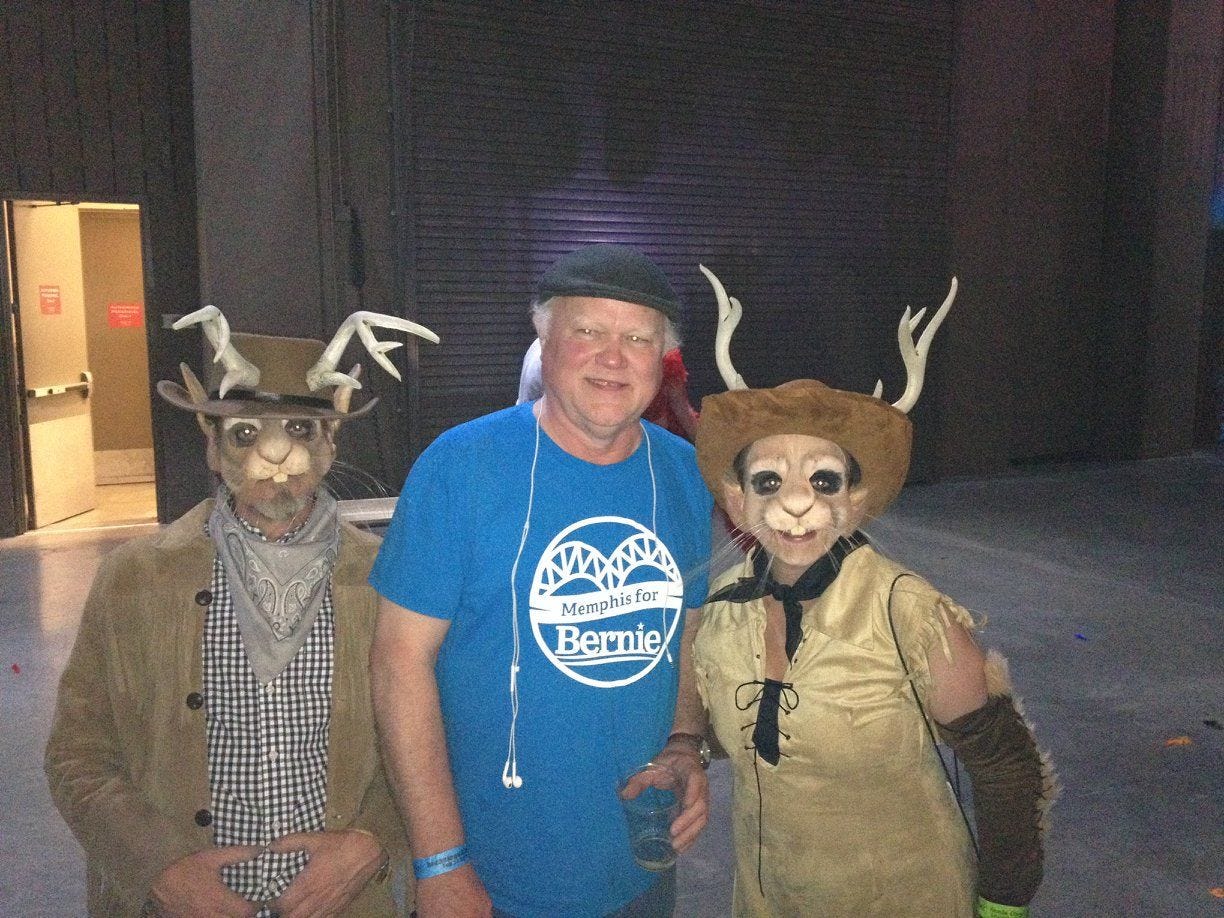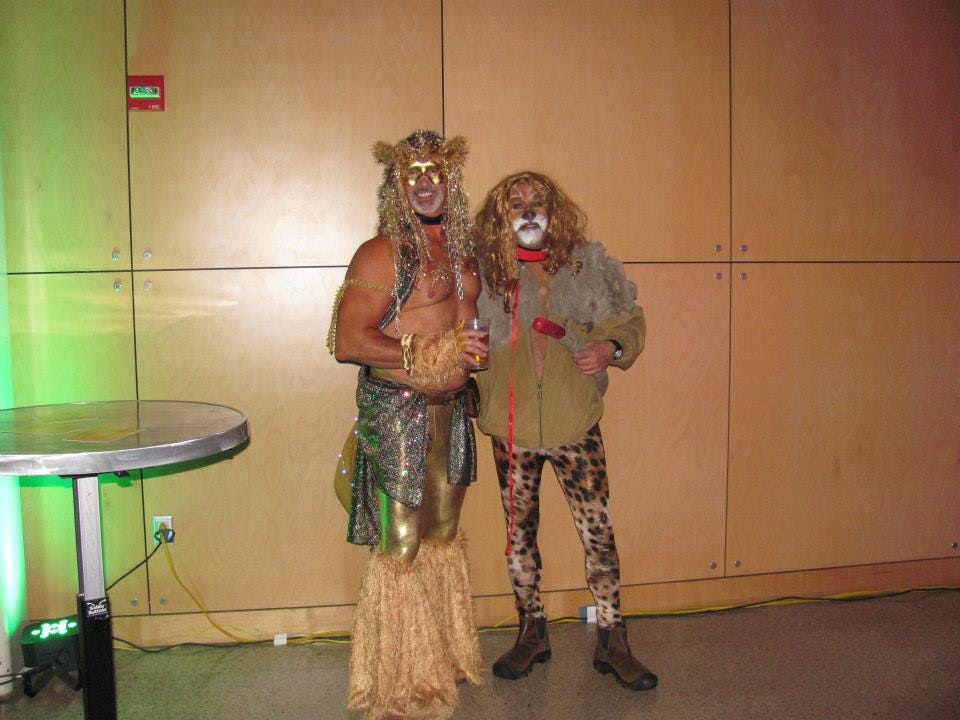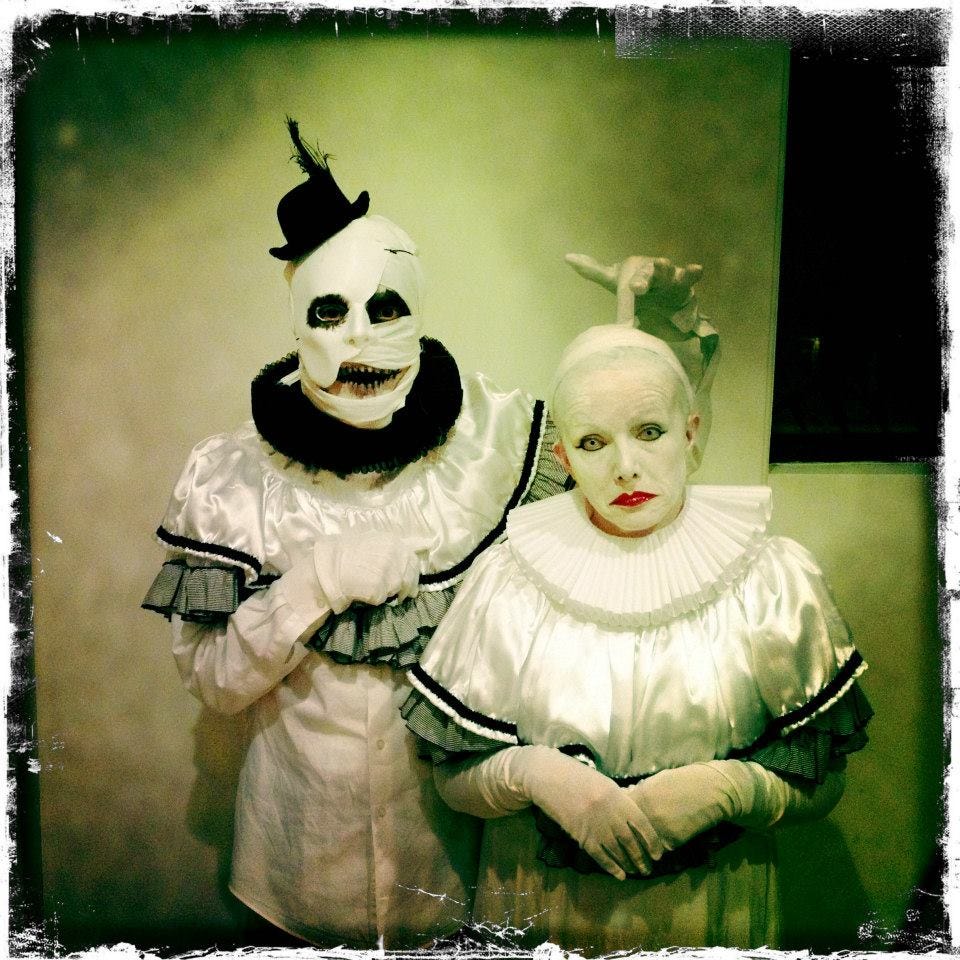Carnaval in a (Brazilian) nutshell
Austin's samba Mardi Gras, from church annex to Palmer Auditorium
Live music has always been a break-even-at-best proposition in Austin, but one annual event has made a lot of money for over 40 years. Brazilian Mardi Gras, Austin style: that’s Carnaval, a crazy musical costume party that went from a rented room in the Dobie Mall in 1977 to selling out the Armadillo World Headquarters just two years later. In-between, it was at Boondocks (4th and Lavaca), the first listing in the Yellow Pages under “Nightclubs.” First-time promoter Mike Quinn called the number and offered the 1000-capacity Boondocks (later Club Foot) a $400 rental fee for the first Saturday night in February. Desperate for publicity, club owners asked that Carnaval instead spend that money advertising on KLBJ-FM, which had cut them off for a hefty past due balance. That arrangement worked out for everybody, as Quinn was able to buy 52 one-minute spots on the top rock station, which drove a quick sellout at $2 a ticket. The club, meanwhile, sold every drop of alcohol, so they let the party go until 4 a.m. There was no band: the sambas and tropicália music driving the half-naked crowd to jubilation was played on cassettes.
More room was needed, so the 1,500-capacity Dillo was booked the next year. A Brazilian band (how many drummers can we fit onstage?) was put together by UT ethnomusicologist Gerard Béhague. Day of the show, Joe Nick Patoski let Austin American Statesman readers know about the wild and crazy Carnaval costume ball, predicting the building at 525 1/2 Barton Springs Rd. would be transported to Copacabana Beach. “You’ll lose all sense of geography and inhibition,” Patoski wrote. The show was sold out by 11 a.m.
Joe Nick had them at costumes. Oh, how Austin loves any excuse to play dress-up! What set this samba-fueled Mardi Gras apart from the original in New Orleans, Quinn told the Statesman, was a communal party atmosphere without all the onlookers. It was indoors, not on the streets.
“Horny Halloween in February” moved in 1980 to the 4,000-cap. City Coliseum, which also sold out, later expanding to two days. Then came Palmer Auditorium, whose 7,000 capacity was just right, even as ticket prices eventually rose to $35. That’s a huge gate for not having to pay a name act. Austin-based Susannah Sharpe and the Samba Police started being the Carnaval band in the late ‘80s and played most years until 2004, when Quinn found a band in New York composed entirely of Brazilians, all veterans of Carnaval in Rio. “They were fantastic!” says Quinn. But Carnaval has never really been about the musicianship onstage. The crowd is its own biggest draw.
Austin’s Carnaval Brasileiro is like a naughty Met Gala with a drum circle.
Here in Austin, the springtime concern isn’t getting into bikini shape, it’s working on your Carnaval hardbody. If the groundhog doesn’t see the shadow of his wood, it’s six more weeks of stairmaster, sweetheart. Or you can take that flabby shit down to Eeyore’s!
With Tex-Mex border music as his gateway, Quinn became obsessed with Brazilian music while working part time at Discount Records on the Drag in the mid-70s. Having studied with Dr. Béhague, an expert in the music of Brazil and Argentina, Quinn started stocking the bins with records from Latin America, giving Discount the best world music section in Texas. Two of his regular customers were John Wheat, then host of KUT’s Horizontes, and Jim Hughes, a costume virtuoso and exotic music afficionado Jim Franklin dubbed “the Royal Hawaiian Prince.”
Wheat asked Quinn to guest host Horizontes daily during his vacation in August ’78, and during those two weeks, Quinn dedicated Fridays to Brazilian music. “The phones rang off the hook!,” Quinn recalls. “So when I took over the show permanently a few weeks later, I made Brazilian Friday a fixture.” That show became the star moneymaker of pledge drives. And Carnaval became an Austin thing, eventually attracting visitors from all over the country.
The son of a UT professor, “Prince” Hughes had attended Austin’s Carnaval celebrations since the early ‘70s, when homesick Brazilian exchange students gathered in an annex of Austin's Unitarian Church and danced to records from home. In ‘76 Carnaval was held at the Austin Country gay bar on Red River (currently Elysium), then the next year at a rented room in Dobie Mall. After that one was a logistical headache, with the sound system going in and out, and the dancefloor too small, Quinn volunteered to help the next year. But after the chief organizer dropped out, it looked like there might not be a next year. Hughes convinced Quinn to keep the conga line going. “Were it not for Prince urging me on, Carnaval would have died on the vine at that point,” says Quinn. Austin’s coatcheck industry would’ve lost a big yearly payday.
Carnaval returned from pando purgatory this past February, on the Saturday before Ash Wednesday, as usual. It was held at Speakeasy, a club on Congress roughly the same size as Boondocks. Quinn is looking for a larger venue for 2024.
MORE CARNAVAL PHOTOS












went to a few the last Municipal Auditorium years and the 1st Palmer Carnaval -so many great costumes and the gals shined out most of them -good article
Good story!